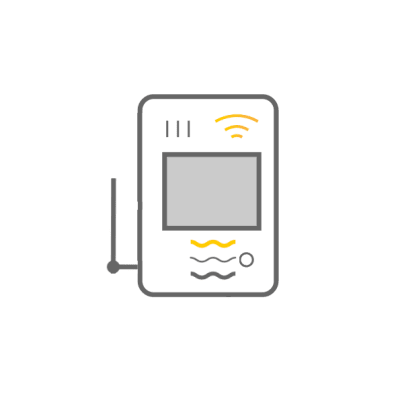Laura Bourland

Humidity Sensor
A humidity sensor or hygrometer detects, measures, and reports the amount of water vapor or moisture in the air. While there are several ways to measure humidity, home humidity sensors often report relative humidity.
Excess moisture and condensation on windows and walls, the sticky feeling of the skin, a musty smell, or mold growth are telltale signs that your home may have a moisture issue. Humidity sensors are available as part of or in addition to a whole-home ventilation system or as a standalone device for specific rooms. Humidity sensors measure relative humidity (RH) sensors or absolute humidity (AH), with relative humidity being the most common.
Relative humidity is the percentage of water in the air compared to the maximum amount the air can hold at a given temperature. Relative humidity changes when the air temperature changes because warmer air can hold more water content than cooler air. Absolute humidity is calculated without referencing air temperature.
Whole-home systems can react to humidity changes in various rooms, but not all systems reach every room in the house. Basements, washrooms, and laundry rooms are the most common areas in a home to have humidity issues.
Humidity sensors require minimal power to operate and can quickly alert you to your home's potential moisture problems before they become a larger issue.
The first iteration of the humidity sensor was developed during the Shang dynasty in Ancient China. To measure, the Chinese used a lump of earth and charcoal. The dry weight was taken and compared to its damp weight after being exposed to the air, with the difference being the humidity level.
Humidifiers Collection

General Filters GeneralAire Model 1042LH Humidifier
General Filters
In Stock

General Filters GeneralAire Model 1137 Fan-Assist Evaporative Humidifier
General Filters
In Stock

General Filters GeneralAire 1099LHS - Humidifier
General Filters
In Stock

General Filters GeneralAire 4400A - Fan Assist - Evaporative Humidifier
General Filters
In Stock

General Filters GeneralAire 4200A Evaporative Humidifier
General Filters
In Stock

General Filters GeneralAire 4200M Evaporative Humidifier
General Filters
In Stock

General Filters GeneralAire 3200A Evaporative Humidifier
General Filters
In Stock

General Filters GeneralAire 3200M Evaporative Humidifier
General Filters
In Stock

Winix - L60 0.6 Gallon Ultrasonic Humidifier with Night Mood Light
Winix
In Stock








